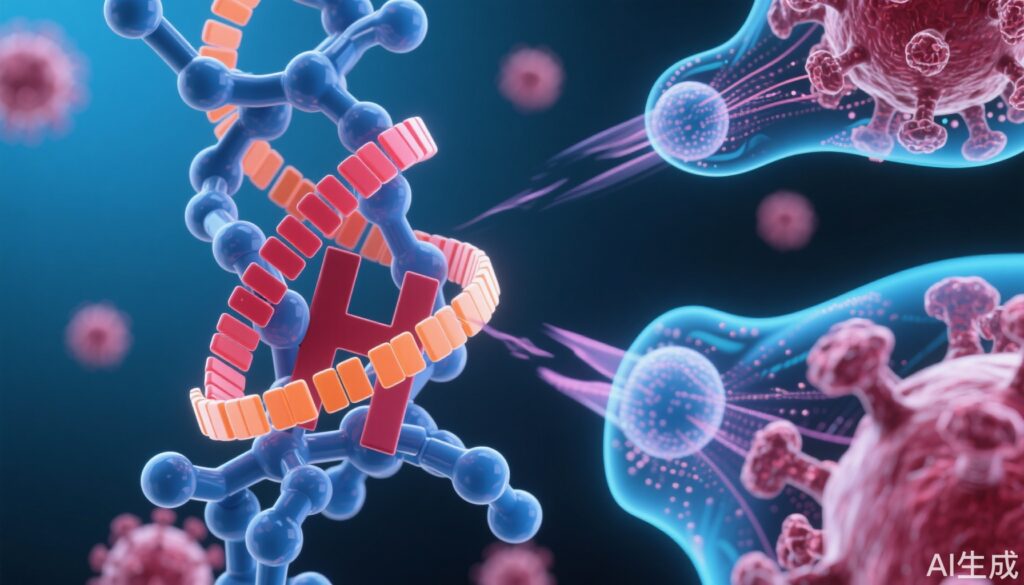Highlight
– Genetically conserved and mutation-intolerant HIV peptides were detected in rebound virus after analytic treatment interruption (ATI), reinforcing their expression and immunologic relevance in vivo.
– Individuals with transient viral control during ATI showed robust CD8 T-cell responses to these peptides, suggesting their potential as immunotherapeutic targets.
– The findings support the development of mRNA vaccines incorporating these peptides, with preclinical and translational research ongoing.
Background
Despite the success of antiretroviral therapy (ART) in suppressing HIV-1 replication and improving prognosis, ART is not curative; viral rebound occurs rapidly upon treatment interruption due to the persistence of latent reservoirs. Strategies aiming for a functional cure—long-term virologic control without continuous ART—remain an urgent priority. Prior research has indicated that HIV-specific CD8 T-cell responses targeting highly conserved regions of viral proteins (Gag, Pol, Vif, Vpr, and Env) are associated with better viral control, but the expression and immunogenicity of these epitopes during viral rebound events had not been fully clarified.
Study Overview and Methodological Design
Marín-Rojas and colleagues conducted a detailed immunoinformatics-driven investigation within the PULSE clinical trial, which recruited 68 men who have sex with men living with HIV in Australia. Participants underwent three consecutive analytic treatment interruptions (ATIs), with monitoring for viral rebound and immunologic responses.
The research team used the Immunoinformatics Analysis Pipeline (IMAP) to select 182 peptides derived from structurally important and mutation-intolerant regions of HIV-1 proteins. Near full-length HIV-1 RNA sequencing was performed on rebound virus samples from participants categorized as noncontrollers (n=4; persistent viral rebound) and transient controllers (n=5; temporary control during the third ATI). CD8 T-cell effector responses to IMAP peptides versus control peptide pools were assessed using ex vivo functional assays.
Key Findings
– IMAP peptides representing conserved and structurally essential regions of Gag, Pol, Vif, Vpr, and Env were identified in 52–100% of rebound viral sequences from participants across ATI timepoints.
– In three transient controllers, CD8 T-cells exhibited 15- to 53-fold higher effector responses to IMAP peptides compared to noncontrollers. Conversely, noncontrollers’ responses to IMAP peptides were approximately 20 times lower than to control peptides.
– The strong correlation between IMAP peptide expression in rebound virus and robust CD8 T-cell responses in transient controllers underscores the immunologic relevance of these epitopes in vivo.
Mechanistic Insights and Pathophysiological Context
The study’s focus on mutation-intolerant, structurally vital HIV-1 regions is biologically plausible: these regions are less likely to escape immune pressure through mutation without compromising viral fitness. Targeting such epitopes could therefore promote more durable immune control, as supported by the observed association with transient virological suppression during ATI. The immune responses documented in transient controllers echo prior findings that effective CD8 T-cell activity against conserved viral regions is a hallmark of elite controllers and post-treatment controllers.
Clinical Implications
Although preliminary, these findings offer a translational framework for therapeutic vaccine development. IMAP peptides could be incorporated into mRNA vaccine constructs designed to bolster CD8 T-cell responses against the most vulnerable regions of HIV-1, potentially facilitating reservoir clearance or durable remission in ART-free individuals. This aligns with the broader shift toward personalized and immune-based HIV cure strategies.
Limitations and Controversies
Limitations include the small sample size, restriction to men who have sex with men in Australia, and the observational nature of immunologic analyses in ex vivo settings. The causal relationship between immune responses to IMAP peptides and clinical control remains to be robustly established. Generalizability to diverse populations and HIV subtypes is uncertain. Furthermore, the durability and breadth of responses induced by candidate vaccines require rigorous preclinical and clinical evaluation.
Expert Commentary or Guideline Positioning
While current treatment guidelines still prioritize lifelong ART for all individuals with HIV, the present study adds to a growing body of evidence supporting immunotherapeutic approaches as adjuncts or alternatives to ART. Dr. Sarah Palmer, senior author, emphasizes the promise of mRNA vaccine platforms for rapid, targeted immunogen delivery and flexibility, mirroring recent advances in COVID-19 vaccinology.
Conclusion
The detection of conserved, mutation-intolerant HIV peptides in rebound virus and their association with potent CD8 T-cell responses in transient controllers highlight promising targets for next-generation therapeutic vaccines. Ongoing efforts to develop and test mRNA vaccines encoding these peptides may pave the way for a functional HIV cure. However, larger, multicenter studies and translational trials are needed to validate these findings and optimize clinical application.
References
1. Marín-Rojas J, et al. Abstract presented at: International AIDS Society Conference on HIV Science; 2024.
2. Ndhlovu ZM, et al. Magnitude and kinetics of CD8+ T cell activation during hyperacute HIV infection impact viral set point. Immunity. 2015;43(3):591-604.
3. International Antiviral Society–USA Panel. Antiretroviral drugs for treatment and prevention of HIV infection in adults. JAMA. 2022;328(2):174-200.



